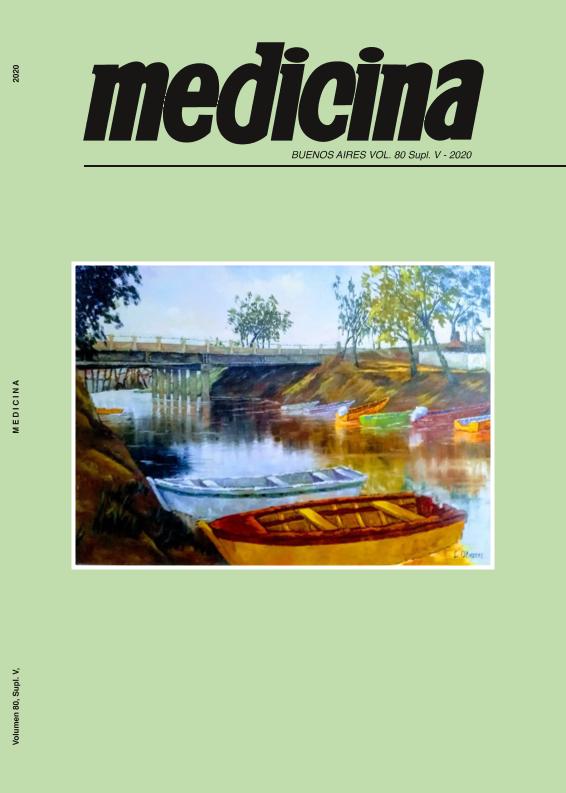Evento
Quantitative and integrative analysis with historical perspective of inflammatory bowel disease research: Understanding etiology and pathogenesis as a result of an interactome or "network effect"
Fernández, María Emilia ; Kembro, Jackelyn Melissa
; Kembro, Jackelyn Melissa ; Nazar, Franco Nicolas
; Nazar, Franco Nicolas ; Moine, Luciana Beatriz
; Moine, Luciana Beatriz ; Jaime, Cristian Emanuel
; Jaime, Cristian Emanuel ; Correa, Silvia Graciela
; Correa, Silvia Graciela
 ; Kembro, Jackelyn Melissa
; Kembro, Jackelyn Melissa ; Nazar, Franco Nicolas
; Nazar, Franco Nicolas ; Moine, Luciana Beatriz
; Moine, Luciana Beatriz ; Jaime, Cristian Emanuel
; Jaime, Cristian Emanuel ; Correa, Silvia Graciela
; Correa, Silvia Graciela
Colaboradores:
Carrillo, Maria Cristina ; Trevani, Analía Silvina
; Trevani, Analía Silvina ; Larocca, Maria Cecilia
; Larocca, Maria Cecilia
 ; Trevani, Analía Silvina
; Trevani, Analía Silvina ; Larocca, Maria Cecilia
; Larocca, Maria Cecilia
Tipo del evento:
Reunión
Nombre del evento:
Reunión Anual de Sociedades de Biociencia 2020; LXV Reunión Anual de la Sociedad Argentina de Investigación Clínica; LXVIII Reunión Anual de la Sociedad Argentina de Inmunología y Reunión Anual de la Sociedad Argentina de Fisiología
Fecha del evento:
10/11/2020
Institución Organizadora:
Sociedad Argentina de Investigación Clínica (SAIC);
Sociedad Argentina de Biología (SAB);
Asociación Argentina de Farmacología Experimental (AAFE);
Asociación Argentina de Ciencia y Tecnología de Animales de Laboratorio (AACYTAL);
Título de la revista:
Medicina (Buenos Aires)
Editorial:
Fundación Revista Medicina
ISSN:
0025-7680
e-ISSN:
1669-9106
Idioma:
Inglés
Clasificación temática:
Resumen
Inflammatory bowel diseases (IBD) present a complex etiology associated with multiple factors interacting at different functional levels (i.e., risk genes, molecules, immune cells, biological processes and environment). The wide diversity of factors and associated variables studied over the last 3 decades in the context of IBD has challenged our ability to integrate the empirical information available in humans. Thus, our goal was to quantitatively analyze how representativeness of components of different functional levels and their interactions have changed over the last 30 years of IBD research in humans. A bibliographic search in Pubmed was performed aimed at extracting experimental studies on IBD in humans published between July 1990 and June 2020. This resulted in 25971 valid abstracts. A search for 1380 specific variables in these abstracts was conducted automatically using customized code in Matlab. The selection of these variables was based on recent reviews and, genetic and molecular catalogues. Publications showed a 5-fold annual rate increase from 1990 to the present. Representativeness of molecular and cellular components remained relatively constant over time, while genes showed a peak increase in publications between 1990 and 2005, with an increasing diversity of genes studied. Microbiota-sensing related variables showed a constant increase in publications. Specifically, components such as IL-1, IL-6, IL-10, NOD2, IFNγ, NF-κB, ATG16L1, TNF, T helper, Treg, macrophages and monocytes emerged as the most frequently studied elements. These components appear as integrative nodes in the network of variables involved in the manifestation of IBD. Our quantitative analysis with historical perspective supports the need to comprehend IBD as the resultant of an interactome or ‘network effect’. It also highlights the importance of elucidating the dynamic relations between nodes to comprise etiology and pathophysiology.
Palabras clave:
Inflammatory bowel diseases
,
Network effect
,
Etiology
,
Pathophysiology
Archivos asociados
Licencia
Identificadores
Colecciones
Eventos(CIBICI)
Eventos de CENTRO DE INV.EN BIOQUI.CLINICA E INMUNOLOGIA
Eventos de CENTRO DE INV.EN BIOQUI.CLINICA E INMUNOLOGIA
Eventos(IIBYT)
Eventos de INSTITUTO DE INVESTIGACIONES BIOLOGICAS Y TECNOLOGICAS
Eventos de INSTITUTO DE INVESTIGACIONES BIOLOGICAS Y TECNOLOGICAS
Citación
Quantitative and integrative analysis with historical perspective of inflammatory bowel disease research: Understanding etiology and pathogenesis as a result of an interactome or "network effect"; Reunión Anual de Sociedades de Biociencia 2020; LXV Reunión Anual de la Sociedad Argentina de Investigación Clínica; LXVIII Reunión Anual de la Sociedad Argentina de Inmunología y Reunión Anual de la Sociedad Argentina de Fisiología; Argentina; 2020; 160-161
Compartir



